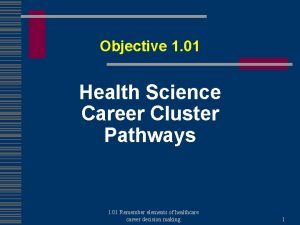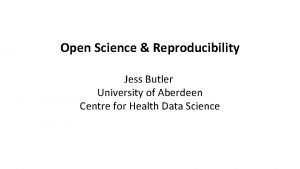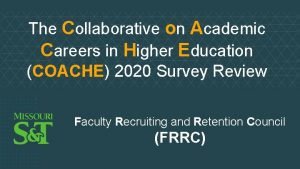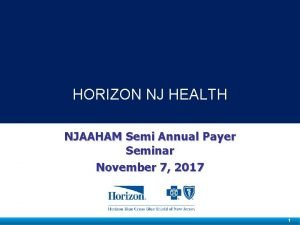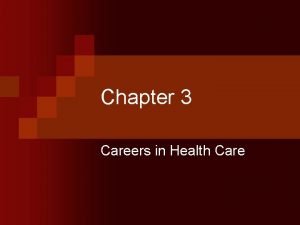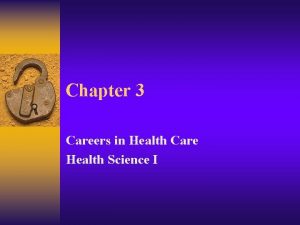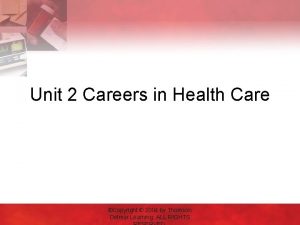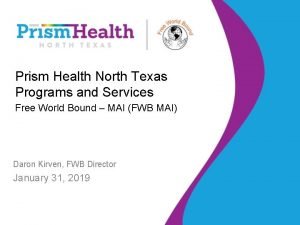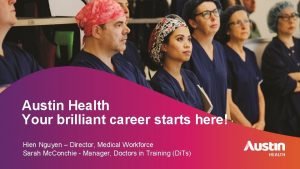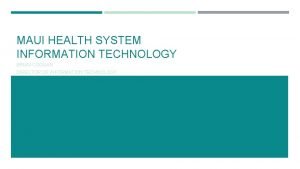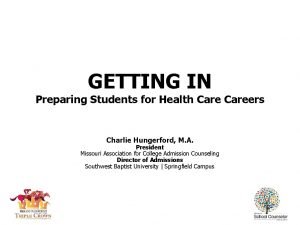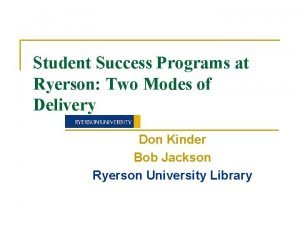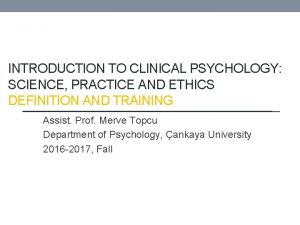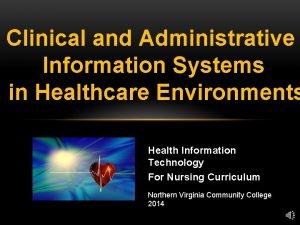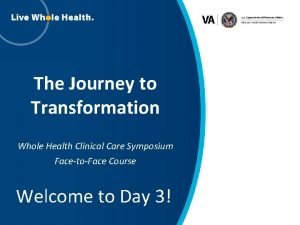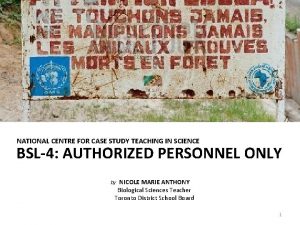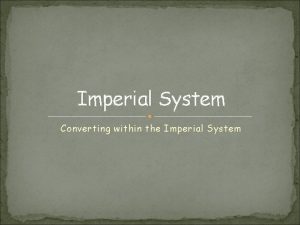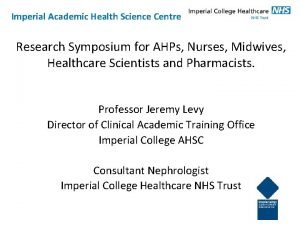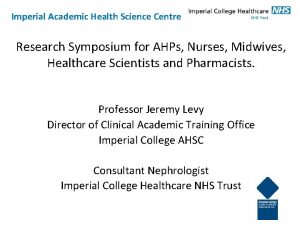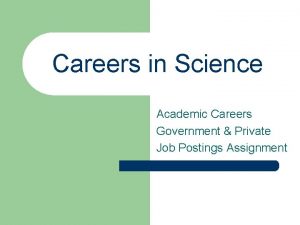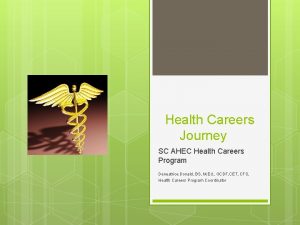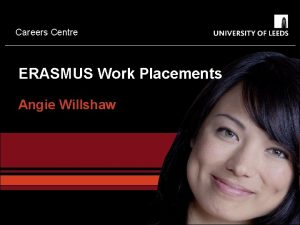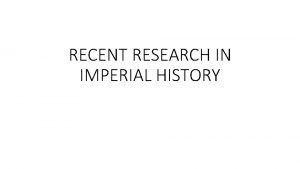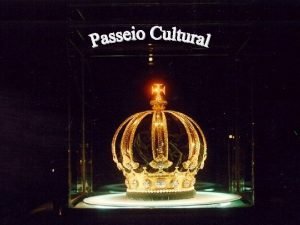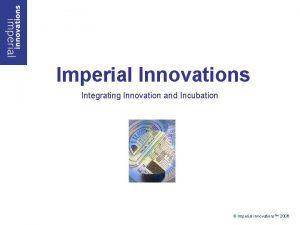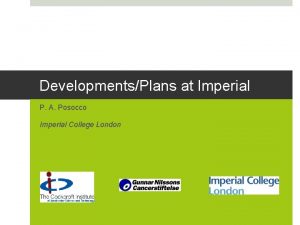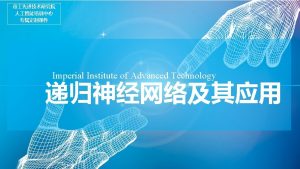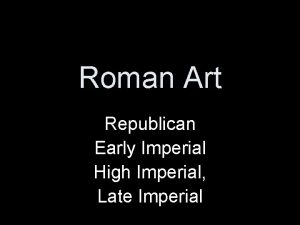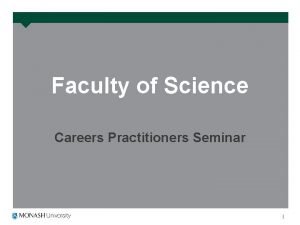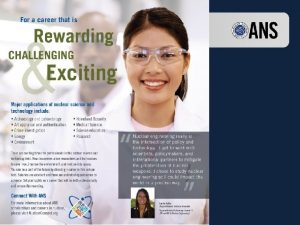Imperial Academic Health Science Centre Clinical academic careers

























- Slides: 25

Imperial Academic Health Science Centre Clinical academic careers Prof Jeremy Levy Director of Clinical Academic Training Office Imperial College AHSC

What is clinical academic medicine? Combining clinical healthcare with research (or teaching) in one form or another Lab based, clinical trials, community or public health, translational, pure science, (teaching) Shouldn’t all staff be doing this ? Lots of routes into academic medicine Aiming to do dedicated period of research leading to MD/Ph. D during clinical training

Can everyone/anyone do research ? No, and funding not available for all If an NTN holder (in a training programme) need permission from training programme director, and 3 months+ notice to start: MOST LIKELY 6 months notice and perhaps 12. . . Need approval for time out from FP or ST grades Don't need approval if in gaps between training segments

When to do it The big question ! Contentious. No correct answer. If before ST 3 post - younger, more energetic, more likely to become a greater scientist ? More opportunity to study/work overseas eg USA BUT maybe poorly differentiated as a doctor, may not fit with future career, older when doing nights etc as Sp. R, long gap between research & finishing training.

Standard clinical (non-GP) training pathway CCT: completion of training Undergraduate Foundation BSc CMT / CST ST MD/ Ph. D Endless chasm of being NHS consultant

Potential academic training pathways CCT Undergrad Foundation CMT ST Endless chasm of being NHS consultant CCT Undergrad with BSc Academic Foundation ACF Ph. D Clinical lecturer. Clinician Scientist Senior Fellow Professor Clinical Senior Lecturer NHS Consultant Dementia

Clinical Academic Training Pathway Integrated Academic Training Path NTN(A) Medical School Academic Foundation Programme F 1 SSM BSc MB/Ph. D Note F 2 CCT NTN(A) NIHR Academic Clinical Fellow (25% academic) CT 1 CT 2 NIHR Clinical Lecturer (50% academic) ST 3 ST 4 ST 5 NIHR Clinical Senior Lecturer (50% academic) ST 6 4 months academic Clinical Research Training Fellow Clinician Scientist Fellow 1. Includes training pathway in medical education 2. Timing of ACF appointment varies across specialties 3. Time taken varies with specialty/competence 4. Easy transfer with clinical training programme Post CCT fellowship

ACF not only route into academic medicine by any means. . No reason cant be applying for research fellowship from routine clinical post. . Just work hard at it Need to approach lab/research principal investigator, plan in advance, submit proposal to funding body for salary. . . Based on YOU, the project and the lab: but the supervisor is critical Your preparation will be at weekends/evenings Don’t forget MRC/Wellcome centres, and pure science labs. .

ACF not only route into academic medicine by any means. . Especially here at Imperial pre-doctoral one year fellowships (if not ACF) Ph. D programmes: CMBI. . . Chain Florey. . . Wellcome. . . CRUK. . . AI 4 H. . . and Blast injuries centre HPRUs Pain Research unit (Prof Rice) Imperial Centre for Engagement & Simulation Science and Centre for Performance Science (Prof Kneebone: http: //performancescience. ac. uk) Crick Institute ICR (institute for cancer research)

Can research training be combined with clinical training contemporaneously? Full time research – not usually. It is possible to set it up, and conduct clinical research to a degree, but not full time research Can be if MSc (eg part time).

Academic vs non academic careers: pros and cons Academic career Purely clinical

Academic vs non academic careers: pros and cons Academic career Purely clinical Clear what training/career looks like Taking time for extra training may be difficult Fast: could be GP/consultant quickly (age 29 -33+ years) Can move into private practice quickly Might get repetitive and boring Might earn more

Academic vs non academic careers: pros and cons Academic career Purely clinical Not clear what outcome is Doing research while learning clinical skills/exams Time getting funding SLOW: Ph. D, coping with full time research More applications, papers Difficult to adjust, interesting, frustrating Might earn less, as become specialist later May be better placed to get THE consultant job you want Clear what training/career looks like Taking time for extra training may be difficult Fast: could be GP/consultant quickly (age 29 -33+ years) Can move into private practice quickly Might get repetitive and boring Might earn (much) more

Realistic time lines Looking for a supervisor/ lab/ research projects 1 year Getting to know lab, research, techniques and writing a grant/ training fellowship application >6 months From application to interview 4 -6 months From award of grant to starting 3 -6 (-12) months It can be up to 12 months from grant award to leaving clinical training (many deaneries only allow you to leave training post once a year)

Summary of common pitfalls: before starting • Inappropriate or poor selection of project, supervisor or institution • Lack of good mentoring/supervision • Plagiarism/Unoriginality • Under-powering of a study • Funding: Struggling with grant applications/Failing to secure funding • Ethics

How to get there • Its about you, the project and the host (research group/lab/supervisor) • YOU: enhance your CV; research skills training; get something published or presented eg audit/QI work, literature review etc: must have (some) papers • The PROJECT: seek INDEPENDENT advice • The SUPERVISOR: have they supervised before; what funding have they won; what outputs; talk to them and other students


Take home • There ARE lots of opportunities in academic medicine • Failure to plan – DON’T • Failure to engage with what might seem unnecessary tasks (eg portfolio assessments) – DON’T • Prepare for the future - DO • Timing (applications) – IT TAKES MUCH LONGER THAN YOU THINK

Covid impact. . . • Clearly currently not clear • Impact on lab time / interpersonal / meetings • Impact on new funding in 2021/2/3 ?

Is this really possible? How would you test ?

Actor Eric Stoltz receives a patent airway courtesy actor Jon Voight and a ballpoint pen in the 1997 giant snake horror film Anaconda. Photo courtesy Sony Pictures

Techlinetrauma. org; Springer;


Objective: to examine the widespread belief that ballpoint pens can perforate the skin and cricothyroid ligament. . And be used in an emergency setting 10 medical laypersons were asked to try and puncture the trachea through the skin in 10 fresh cadavers using a ballpoint pen. 3 different pens used. Only one participant could penetrate the cricothyroid ligament. . After 3 attempts and with a lot of patience and force A cricothyroidectomy just with a ballpoint pen is virtually impossible. .

The three ballpoint pens involved in the study: Schneider’s K 15 (A), Ritter PEN 01711 Classic (B) and Montblanc Masterpiece Platinum Line Classique (C). Ulrich Kisser et al. Emerg Med J 2016; 33: 553 -556 Copyright © BMJ Publishing Group Ltd and the College of Emergency Medicine. All rights reserved.
 Health science careers cluster
Health science careers cluster Aberdeen centre for health data science
Aberdeen centre for health data science Collaborative on academic careers in higher education
Collaborative on academic careers in higher education What is his favorite subject?
What is his favorite subject? Food science careers
Food science careers Horizon nj health payer id
Horizon nj health payer id Chapter 3 careers in health care answer key
Chapter 3 careers in health care answer key Chapter 3 careers in healthcare
Chapter 3 careers in healthcare Horizon nj health policy number
Horizon nj health policy number Unit 2 careers in health care
Unit 2 careers in health care Prism health north texas careers
Prism health north texas careers Aohs health careers exploration
Aohs health careers exploration Austin health careers
Austin health careers Maui health system careers
Maui health system careers Charlie health careers
Charlie health careers Chapter 3 careers in health care
Chapter 3 careers in health care Centroid engineering mechanics
Centroid engineering mechanics Difference between centre of gravity and centroid
Difference between centre of gravity and centroid Ryerson academic success centre
Ryerson academic success centre Clinical psychology science practice
Clinical psychology science practice Clinical psychology science practice
Clinical psychology science practice Administrative healthcare information systems
Administrative healthcare information systems Whole health clinical group
Whole health clinical group Chanel mobile art pavilion
Chanel mobile art pavilion National center for case study teaching in science
National center for case study teaching in science Academic standards in physical science
Academic standards in physical science
